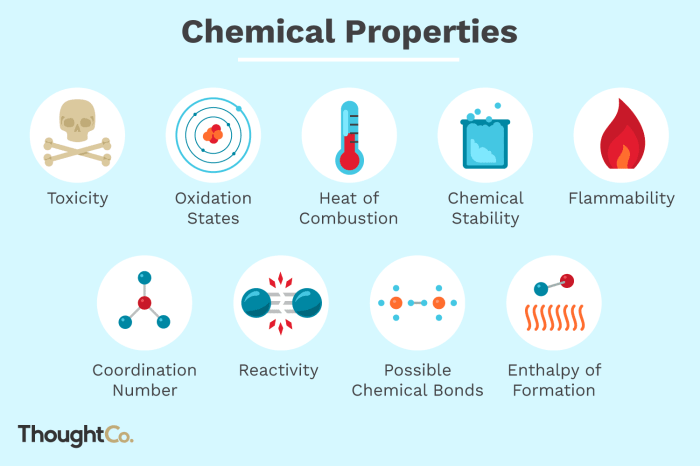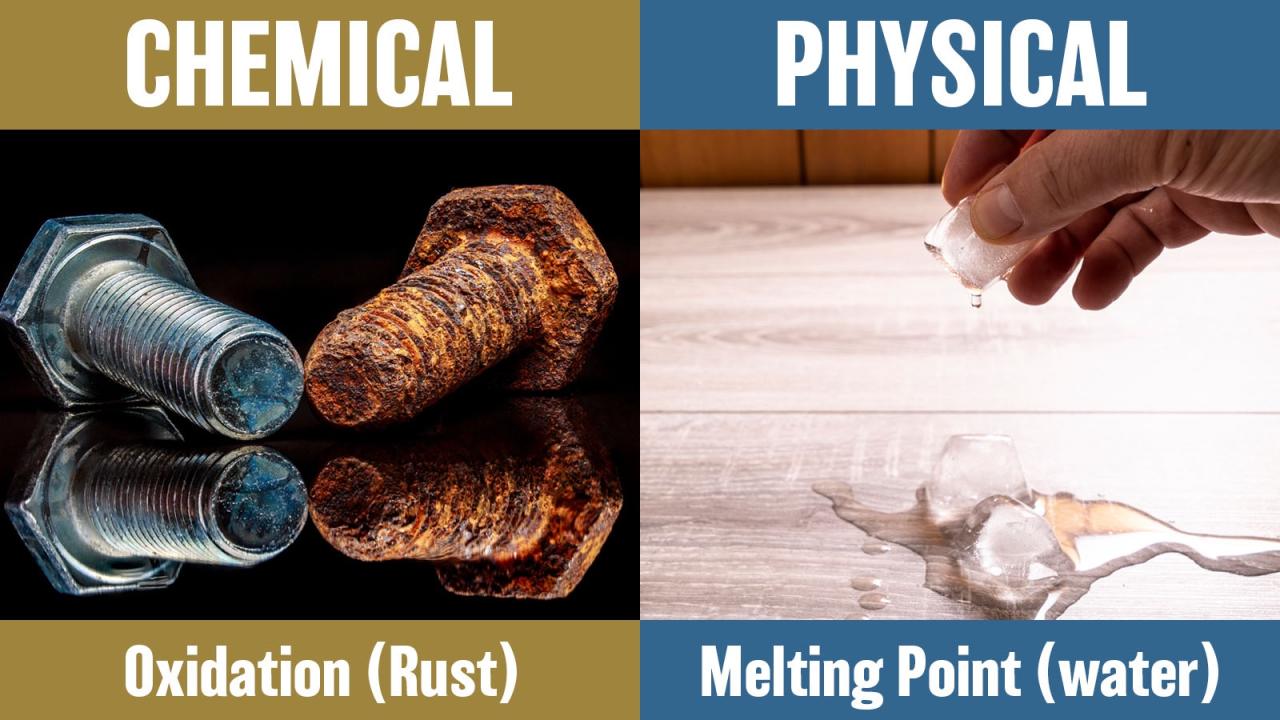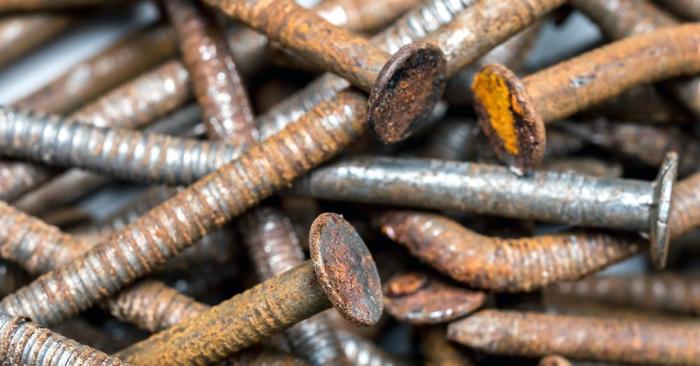Is tendency to corrode a physical or chemical property – The tendency to corrode is a crucial concept in materials science and engineering. It determines the durability and lifespan of materials exposed to corrosive environments. This article delves into the nature of corrosion, exploring whether it is a physical or chemical property and examining the factors that influence its severity.
Corrosion is a complex process that involves the deterioration of materials due to chemical reactions with their surroundings. Understanding the fundamental properties that govern corrosion is essential for developing effective prevention strategies and selecting appropriate materials for specific applications.
Physical Properties: Is Tendency To Corrode A Physical Or Chemical Property

Physical properties are characteristics of a substance that can be observed without changing its chemical composition. They include properties such as color, density, melting point, and boiling point.
Tendency to corrode is a physical property because it can be observed without changing the chemical composition of the substance. For example, iron will rust when exposed to oxygen and water, but the iron atoms themselves do not change.
Examples of Physical Properties
- Color
- Density
- Melting point
- Boiling point
- Electrical conductivity
- Thermal conductivity
- Magnetic susceptibility
- Optical properties
Chemical Properties

Chemical properties are characteristics of a substance that describe its ability to undergo chemical reactions. They include properties such as flammability, reactivity, and toxicity.
Tendency to corrode is NOT a chemical property because it does not describe the substance’s ability to undergo chemical reactions. Instead, it describes a physical change that occurs when the substance is exposed to certain environmental conditions.
Examples of Chemical Properties
- Flammability
- Reactivity
- Toxicity
- Acidity
- Basicity
- Oxidizing ability
- Reducing ability
Corrosivity

Corrosivity is the tendency of a substance to cause corrosion. Corrosion is the deterioration of a material due to a chemical reaction with its environment.
The factors that affect corrosivity include:
- The type of metal
- The presence of oxygen
- The presence of water
- The temperature
Examples of Highly Corrosive Substances
- Hydrochloric acid
- Sulfuric acid
- Nitric acid
- Sodium hydroxide
- Potassium hydroxide
Corrosion Prevention
There are a number of methods that can be used to prevent corrosion, including:
- Using protective coatings
- Using corrosion-resistant materials
- Controlling the environment
Protective Coatings
Protective coatings can be applied to metal surfaces to prevent them from coming into contact with corrosive substances. These coatings can be made of a variety of materials, such as paint, epoxy, or rubber.
Corrosion-Resistant Materials, Is tendency to corrode a physical or chemical property
Corrosion-resistant materials are materials that are not easily corroded. These materials include stainless steel, aluminum, and titanium.
Controlling the Environment
Controlling the environment can also help to prevent corrosion. This can be done by reducing the amount of oxygen and water in the air, or by raising the temperature.
FAQ Corner
Is corrosion a reversible process?
No, corrosion is generally an irreversible process. Once a material has corroded, it cannot be restored to its original state.
What are the most common types of corrosion?
The most common types of corrosion include uniform corrosion, pitting corrosion, galvanic corrosion, and stress corrosion cracking.
How can corrosion be prevented?
Corrosion can be prevented or mitigated by using protective coatings, corrosion-resistant materials, cathodic protection, and proper maintenance practices.